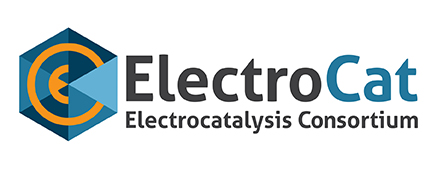Characterization & Testing
-
Quantification of Active Sites on the Surface of PGM-free Catalysts
This capability uses specially developed molecular probes to poison the catalyst, in order to identify the active site and estimate its density through in situ techniques. Correlating the number of the probe molecules with the loss in measured activity after poisoning gives the number of active sites in a given material. Read More
-
Internal Surface Energy and Wetting Properties of Electrocatalysts
This capability uses Inverse Gas Chromatography (IGC), a highly sensitive and versatile gas phase technique, to study the surface and properties of particulate and fibrous materials. In IGC, the roles of the stationary (solid) and mobile (gas or vapor) phases are inverted from traditional analytical gas chromatography (GC). Read More
-
Kinetics and Transport
This capability takes advantage of fully automated testing equipment with a variety of unique aspects to extract PGM-free electrochemical kinetic data via in-operando testing in a differential cell configuration. Read More
-
Controlled Functionalization of Model Catalysts
The energetic neutral atom beam lithography and epitaxy (ENABLE) capability represents a controlled method for clean and selective introduction of heteroatom dopants into a variety of substrates, including highly graphitic 2D structures, accompanied by in-situ characterization and diagnostic capabilities. Read More
-
Electrode Microstructure Characterization and Simulation
This capability encompasses structural imaging of electrodes, using synchrotron X-rays, combined with characterization via other techniques such as porosimetry and ultra-small angle X-ray scattering (USAXS), and use of these data from multiple techniques to build a structural and transport model of the electrode. Read More
-
X-Ray Characterization Techniques
This capability encompasses a variety of lab-based equipment specifically targeting the development of PGM-free catalysts, electrodes, and MEAs, including fundamental materials characterization techniques providing information about the physical and chemical properties of electrocatalysts, catalyst precursors, and electrodes. Read More
-
X-Ray Photoelectron Spectroscopy
X-ray photoelectron spectroscopy (XPS) is a surface sensitive method for obtaining both composition (atomic percentage) and chemical bonding (oxidation state) information. For PGM-free catalysts, XPS is particularly powerful for characterizing the transition metal, carbon, and nitrogen composition and chemical bonding. Read More
-
Electron Tomography
STEM-based electron tomography is used to provide three-dimensional (3D) reconstructions of the structure (STEM image reconstruction) and composition (chemical map reconstruction) of materials. Electron tomography is analogous to bulk tomography techniques like X-ray tomography, but can provide information at a much higher resolution (sub-nm-scale) and can be used to combine morphological, crystallographic, and compositional data into 3D renderings. Read More
-
Analytical Electron Microscopy
High-resolution transmission electron microscopy (TEM) and aberration-corrected scanning transmission electron microscopy (STEM) are microscopy methods used to characterize the atomic-scale structure of PGM-free catalysts (typically in powder form) and the material constituents (catalyst and ionomer) comprising membrane electrode assemblies (MEAs). Read More
-
In situ Electron Microscopy
The ability to study the dynamic behavior of PGM-free catalysts under relevant operating and/or synthesis conditions (e.g., temperature, pressure, potential cycling, and environment) can provide unprecedented nanometer-level insight regarding morphological and compositional changes that contribute to performance degradation. Read More
